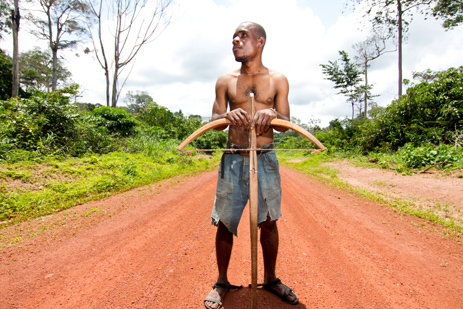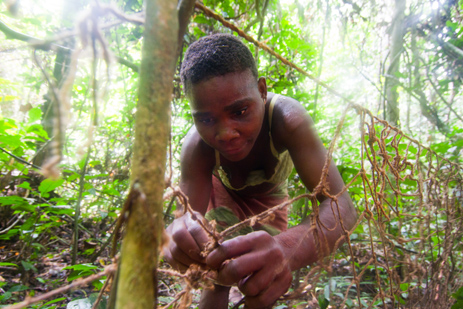
I was in the Central African Republic’s (commonly shortened to CAR) Dzanga-Sangha Reserve and my hosts for the day were a group of BaAka. The BaAka are a people so exotic and so unlikely that most of us assume they are a figment of a fertile imagination, but the BaAka are real and they have another, more common, name. The BaAka are pygmies.
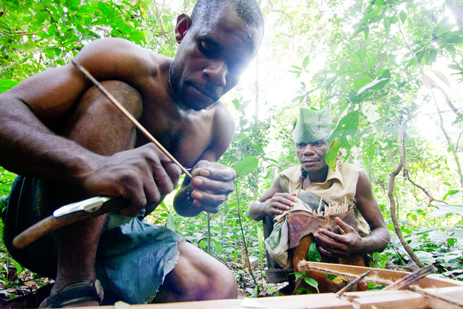
Dzanga-Sangha is a vast and near pristine chunk of the Congolese basin rainforests and it forms a part of the newly inscribed Unesco World Heritage-listed Sangha River Trinational protected area. Also encompassing the Parc National Nouabalé-Ndoki in Congo and the Parc National de la Lobéké in Cameroon, the Sangha trinational protected area has healthy populations of western lowland gorillas, forest elephants and chimpanzees. But there’s more to these forests than the chance to ogle mega-fauna. In CAR’s Dzanga-Sangha the park authorities, realising the importance of getting locals involved in any conservation effort, have established a series of cultural programmes that allows visitors a glimpse into the traditional pygmy lifestyle.
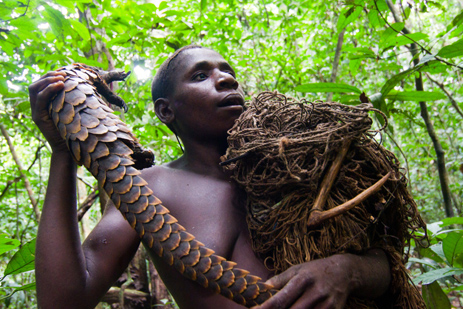
The opportunity to experience something of the lifestyle of these near-mythical peoples had brought me here, and looking back over the past few days I had to stop and shake my head in disbelief at the thought of all I had seen and done. There had been the star-spangled nights when pygmies and forest spirits known as jengi had blended into one and other as they danced around the embers of a fire; the loading of poison-tipped arrows into bows as our monkey prey cowered in the canopy; the awe of following pygmy trackers for a close encounter with a group of habituated gorillas; and the sheer sense of adventure from paddling down jungle fringed rivers during mighty thunder storms.
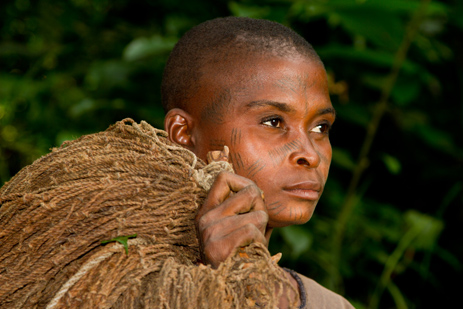
Now I found myself net hunting, probably the best experience of all. Net hunting could be described as ‘dry land trawler fishing’. Working as a team, the BaAka stretched a low net out and then, with great excitement, charged through the forest shouting at the top of their lungs. The idea was that any duiker (a type of small antelope) hiding in the undergrowth would bolt and flee towards the net where, like a struggling tuna, it could be easily picked off. Dozens of times the net was laid out and the noisy charge took place; a couple of times a duiker bolted but always in the wrong direction. Finally though, just as everyone was starting to tire, a squeal from a duiker and an excited cheer from the nearest BaAka indicated that the hunt had been a success. Tonight I would be leaving this African wonderland, but the BaAka would feast on antelope and once again dance with the spirits of the forest.
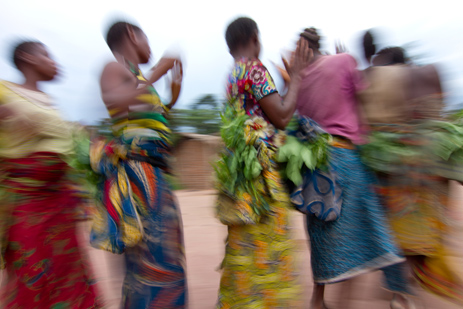
Getting there: Air France offers the most reliable flights to Bangui (capital of CAR). Getting from Bangui to Dzanga-Sangha is possible by infrequent public transport or private car.
Where to stay: the superb South African-run Sangha Lodge (www.sanghalodge.com) offers comfortable traditional-style huts set above the river.
Learn more: check out the Dzanga-Sangha Reserve (www.dzanga-sangha.org). The park authorities organise most BaAka cultural encounters. For a more intense immersion in BaAka life, contact American Louis Sarno ([email protected]) who has been living with the local BaAka for nearly 30 years.
